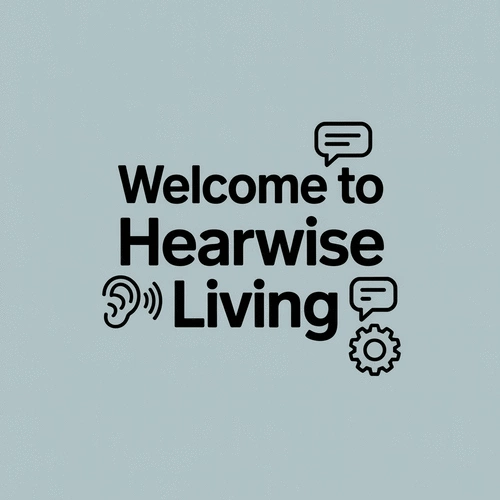Improving communication in families dealing with hearing loss is not just beneficial—it's essential. As we explore the dynamics of family communication, consider how small changes can lead to significant improvements in relationships and understanding.
What You Will Learn
- Recognizing Communication Barriers: Acknowledge the unique challenges that arise when a family member experiences hearing loss, including difficulties in conversations and feelings of isolation.
- Utilizing Different Communication Methods: Explore options like sign language, oral communication, and written tools to cater to the preferences of all family members.
- Adjusting Your Home Environment: Make simple changes to reduce background noise and enhance lighting, facilitating clearer conversations.
- Incorporating Technology: Consider hearing aids, cochlear implants, and communication apps that can significantly aid in family interactions.
- Fostering a Supportive Atmosphere: Encourage transparent discussions about hearing loss within the family to build a strong support network.
Enhancing Family Communication with Hearing Loss
Understanding and addressing the challenges of hearing impairment can transform family dynamics. This visual highlights key strategies and communication modes to foster stronger connections.
Recognizing Challenges
- Difficulties in conversations
- Misinterpretations
- Feelings of isolation
Understanding these fosters empathy.
Communication Modes
- Sign Language
- Oral Communication
- Written Communication
Tailor to family preferences.
Key Strategies
- Adjust Environment
- Incorporate Technology
- Utilize Visual Cues
Enhance clarity and connection.
Learning & Support
- Workshops & Programs
- Support Groups
- Online Resources
Continuous growth and empowerment.
Understanding Hearing Loss and Its Impact on Family Communication
Navigating the world of hearing loss can be challenging not just for individuals but for their entire families. Have you noticed how communication barriers can create misunderstandings, frustration, and even distance between family members? Understanding the challenges of hearing impairment is the first step towards fostering a more cohesive family dynamic.
Recognizing the Challenges of Hearing Impairment
Families with a member experiencing hearing loss often face unique communication barriers. Common challenges include:
- Difficulties in conversations: Background noise and multiple speakers can make it hard to follow discussions.
- Misinterpretations: Without clear communication, jokes or important information can be misheard, leading to confusion.
- Feelings of isolation: The hearing-impaired family member may feel left out during gatherings, which can strain relationships.
By recognizing these challenges, families can take proactive steps to enhance their communication strategies and ensure that everyone feels included and understood.
Importance of Effective Communication for Family Dynamics
Improving communication within the family is crucial for maintaining strong relationships. When family members can express themselves freely, it significantly reduces frustration and enhances overall harmony. Here are some benefits of effective communication:
- Strengthened connections: Open dialogue fosters trust and understanding amongst family members.
- Decreased misunderstandings: Clear communication helps prevent conflicts that stem from misinterpretations.
- Enhanced support: Families are better equipped to support one another emotionally and practically.
Ultimately, when families prioritize communication, they create an environment where every member feels valued and connected, which is essential for overall well-being.
Hearing Loss Awareness and its Relevance to Families
Awareness of hearing loss is vital for families as it influences daily interactions and relationships. Understanding how hearing loss affects communication can help families adapt and respond effectively. For instance, the American Speech-Language-Hearing Association (ASHA) emphasizes the importance of family-centered care in managing communication disorders. Here’s why awareness matters:
- Empathy and patience: Recognizing the struggles of a family member with hearing loss encourages empathy and patience in conversations.
- Informed decisions: Families can make better choices regarding communication strategies and assistive technologies when they understand hearing loss.
- Collective support: A family that is informed about hearing loss can work together to create a supportive environment.
At HearWise Living, we believe that building awareness as a family can significantly enhance the quality of life for everyone involved. It’s all about fostering a supportive community and navigating the journey of hearing loss together!
Exploring Communication Modes for Families
Different Approaches: Sign Language, Oral Communication, and More
When it comes to communication within families, there are various methods to consider. Choosing the right approach ensures that everyone can participate fully. Here are some popular communication modes:
- Sign Language: A visual language that can be beneficial for those with significant hearing loss.
- Oral Communication: Using spoken words and lip-reading techniques, which can be effective for many. Research published in PMC highlights the benefits of early intervention and oral communication for children with hearing loss.
- Written Communication: Notes, texts, or emails can serve as great tools, especially in noisy environments.
Each family is unique, and selecting the most suitable method can foster better interaction and understanding.
Incorporating Family Preferences and Proficiency
Choosing a communication mode isn't just about the hearing-impaired member; it’s also essential to consider everyone else’s preferences and skills. Here’s how to assess these factors:
- Involve everyone: Discuss what modes each family member is comfortable with.
- Evaluate skills: Assess the proficiency of family members in different communication methods.
- Be flexible: Be willing to try different approaches and adapt as necessary.
This collaborative approach ensures that every family member’s voice is heard and valued, contributing to a more inclusive family environment.
Utilizing Visual Cues and Nonverbal Communication
Nonverbal cues can play a significant role in communication, especially for those with hearing impairment. Incorporating visual cues can enhance understanding and connection. Consider these strategies:
- Facial expressions: Use expressive facial cues to convey emotions and reactions.
- Body language: Maintain an open posture to encourage a welcoming atmosphere.
- Gestures: Simple hand signals or movements can aid in conveying messages effectively.
By utilizing these strategies, families can create a more engaging and supportive communication experience for everyone involved.
Pro Tip
Did you know? Utilizing visual cues and nonverbal communication can significantly enhance interactions with hearing-impaired family members. Simple gestures, facial expressions, and body language can convey messages effectively and create a more inclusive environment. Make it a habit to incorporate these elements into your daily conversations!
Frequently Asked Questions About Family Communication and Hearing Loss
What are the main communication challenges families face with hearing loss?
Families often encounter difficulties in conversations, leading to misinterpretations and feelings of isolation for the hearing-impaired member. Background noise and multiple speakers can further complicate discussions.
What communication methods can families use?
Families can explore various methods such as sign language, oral communication (including lip-reading), and written communication (notes, texts, emails). The choice often depends on family preferences and proficiency.
How can the home environment be adjusted to improve communication?
Simple changes can make a big difference, such as reducing background noise and improving lighting. These adjustments help create a more conducive environment for clearer conversations.
What role does technology play in aiding communication?
Technology like hearing aids, cochlear implants, and communication apps can significantly assist in family interactions by enhancing sound clarity and providing alternative communication channels.
Why is fostering a supportive atmosphere important?
Encouraging open and transparent discussions about hearing loss within the family helps build a strong support network. This fosters empathy, reduces frustration, and ensures every family member feels valued and connected.
Summarizing Key Strategies for Effective Communication
As we wrap up this discussion, let's recap some essential tips and strategies for effective communication that can truly enhance your family dynamics. Remember, navigating the challenges of hearing loss requires teamwork and understanding. Here’s a quick list of strategies we've covered:
- Recognize Communication Barriers: Acknowledge the unique challenges that arise when a family member experiences hearing loss.
- Utilize Different Communication Methods: Explore options like sign language and oral communication, choosing what best fits your family’s needs.
- Adjust Your Home Environment: Make simple changes to reduce background noise and improve lighting for clearer conversations.
- Incorporate Technology: Consider hearing aids, cochlear implants, and apps that can significantly aid in communication.
- Foster a Supportive Atmosphere: Encourage open discussions about hearing loss within the family to build a strong support network.
By implementing these strategies, you're not just improving communication; you're also enhancing relationships and fostering an inclusive environment that values every family member’s voice. Remember, every step towards better communication is a step towards a closer-knit family!
Encouraging Family Engagement and Continuous Learning
At HearWise Living, we believe that sharing experiences is vital to growth and understanding. I invite you and your family to share your stories and tips related to hearing loss and communication. What approaches have worked for you? How have you navigated challenges together? By fostering a community of support, we can learn from each other and create a network of empowerment. For further insights on the impact of hearing loss on family communication, you can refer to studies like those published in PMC on the psychosocial effects of hearing impairment.
Consider starting a family discussion group where everyone can contribute their insights and experiences. This exchange not only enriches your understanding but helps build a stronger family bond. Remember, you’re not alone on this journey—together, we can make a difference!
Exploring Educational Workshops and Community Programs
Lastly, let’s explore some educational workshops and community programs that can further aid your family in enhancing communication skills. Engaging in these resources can provide you with practical tools and support:
- Auditory-Verbal Therapy Sessions: These focus on nurturing listening and spoken language skills in children with hearing loss.
- Family Communication Workshops: Designed to equip families with effective communication strategies tailored to their unique dynamics.
- Local Support Groups: Connecting with others facing similar challenges can provide invaluable emotional support and practical advice.
- Online Resources and Webinars: Many organizations offer virtual seminars that cover various topics related to hearing loss and communication.
Participating in these programs not only fosters learning but also builds a supportive community around your family. By taking advantage of these resources, you’re empowering yourself and your loved ones to communicate better and thrive together. Let’s continue to embrace the journey towards better hearing and deeper connections!
Recap of Key Points
Here is a quick recap of the important points discussed in the article:
- Recognize Communication Barriers: Acknowledge the unique challenges that arise when a family member experiences hearing loss.
- Utilize Different Communication Methods: Explore options like sign language and oral communication, choosing what best fits your family’s needs.
- Adjust Your Home Environment: Make simple changes to reduce background noise and improve lighting for clearer conversations.
- Incorporate Technology: Consider hearing aids, cochlear implants, and apps that can significantly aid in communication.
- Foster a Supportive Atmosphere: Encourage open discussions about hearing loss within the family to build a strong support network.










